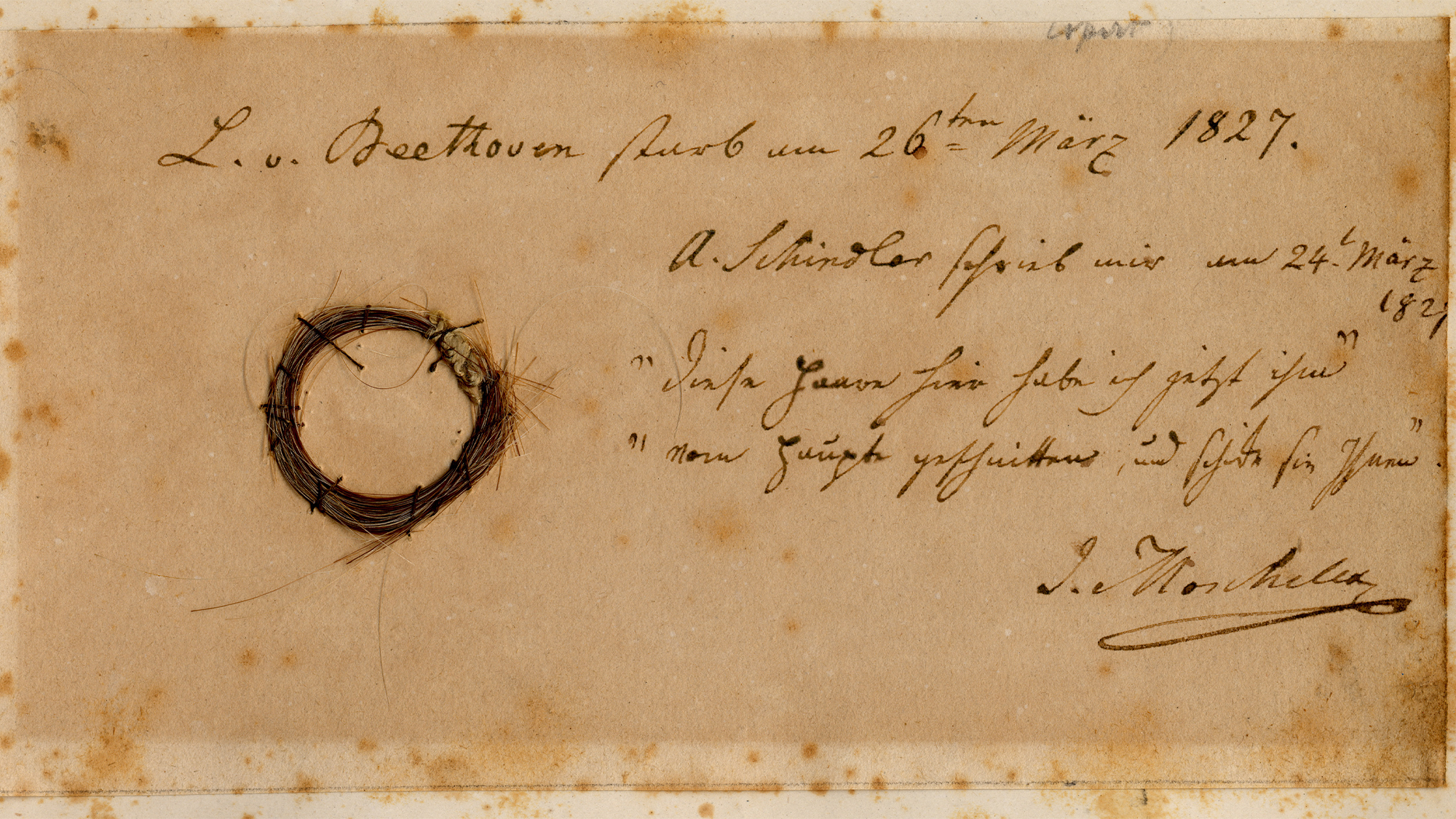

Swifties, Jerry Garcia’s Deadheads, and Beyoncé’s BeyHive have nothing on Symphony No. 5 in C Minor composer Ludwig van Beethoven’s fandom. The composer is considered one of the most influential musicians of all time and he defied the onset of deafness in his mid-20s and went on to compose 722 works of music, including 16 string quartets, 35 piano sonatas, and 9 symphonies.
Thanks to locks of hair saved by his devoted fans and collaborators, a team of researchers have analyzed his DNA to learn more about the composer’s ailments, almost 200 years after his death. The research is detailed in a study published this week in the journal Current Biology.
Starting at the end of the 1790s, Beethoven started losing his hearing for unknown reasons. In 1802, 25 years before his death, Beethoven asked that his doctor describe his progressive hearing loss to the world so that “as far as possible at least the world will be reconciled to me after my death.” He was also plagued with gastrointestinal ailments and jaundice.
[Related: Oldest DNA ever sampled paints a lush portrait of a lost Arctic world.]
Beethoven’s desire for a postmortem description of his illness inspired a team of scientists in Europe to pursue this study. Improvements in DNA analysis enabled them to completely sequence a genome from small quantities of very old hair.
“Our primary goal was to shed light on Beethoven’s health problems, which famously include progressive hearing loss, beginning in his mid- to late-20s and eventually leading to him being functionally deaf by 1818,” said study co-author Johannes Krause from the Max Planck Institute for Evolutionary Anthropology in Leipzig, Germany, in a statement.
Saving locks of hair of the deceased was a common mourning practice in the Nineteenth Century. In 1804, Treasury Secretary Alexander Hamilton was famously killed in a duel with his political rival Aaron Burr and his wife Eliza clipped a lock of her late husband Alexander Hamilton’s hair and kept it in a ring.
The team on this study first analyzed the locks of hair attributed to Beethoven, soon finding five others that were confirmed to come from the same European male. They deemed that the five locks were “almost certainly authentic” and then sequenced the composer’s Beethoven’s genome.

While the team was unable to find a definitive cause for the musician’s gastrointestinal problems or deafness, they did find evidence of a hepatitis B infection and a number of significant genetic risk factors for liver disease. These factors together with his overconsumption of alcohol likely contributed to his death at the age of 56. Earlier medical biographers had suggested that Beethoven may have had substantial inherited health troubles, but they did not find any evidence of this in his genome.
[Related: Autopsies are more important than ever. Here’s what they can tell us.]
They also uncovered another surprise locked within the composer’s DNA. Beethoven’s Y chromosome does not match the Y chromosome of any of the five living relatives who share the same last name and common ancestor on Beethoven’s paternal line. There likely was an extramarital “event” on Beethoven’s father’s side.
“This finding suggests an extrapair paternity event in his paternal line between the conception of Hendrik van Beethoven in Kampenhout, Belgium in c.1572 and the conception of Ludwig van Beethoven seven generations later in 1770, in Bonn, Germany,” said study co-author Tristan Begg, now at the University of Cambridge, in a statement.
The DNA they found in Beethoven’s hair is genetically most similar to that of people living in the present day state of North Rhine-Westphalia, in the western Germany.
Additional studies of the hair samples may help clarify when Beethoven was infected with hepatitis B. Further studies of his close relatives might also help to clarify his biological relationship to living descendants of the Beethoven family.
